Price Action Trading
Price action trading involves analyzing the raw price movements of an asset, focusing on chart patterns, support and resistance levels, and candlestick formations to make trading decisions. Traders rely on historical price data to identify trends, reversals, and key market levels, without the use of lagging indicators. This strategy emphasizes simplicity and direct market interpretation, though it requires experience and a keen understanding of price behavior to be successful.
4/12/202512 min read


Introduction
Price action trading relies on the analysis of historical price data to identify trading opportunities. The basic premise of price action trading is that all the information that is needed to make a trading decision is contained in the price chart.
Historical Context and Evolution of Price Action Trading
The historical context of price action trading traces back to the early days of financial markets. In the 17th century, Japanese rice traders began to use a form of price action analysis called candlestick charting.
In the 19th century, Western traders began to develop their own forms of price action analysis. One of the most influential traders of this era was Charles Henry Dow. Dow, a co-founder of The Wall Street Journal and the Dow Jones & Company, developed the theory of moving averages.
One of the most important developments in the 20th century was the introduction of electronic trading. Electronic trading made it possible for traders to trade 24 hours a day, 7 days a week.
What is Price Action
Price action is a technical analysis approach that uses historical price data to predict future price movements. Its basic premise is that all the information that is needed to make a trading decision is contained in the chart, believing that an asset’s price is determined by supply and demand.
When demand for an asset exceeds the asset’s supply, its price will turn bullish. When the supply of an asset exceeds the asset’s demand, its price will turn bearish.
Key Price Action Trading Principles and Concepts
We look for trends in the market: sustained price movement of a security in one direction. We use trends to identify potential trading opportunities.
Support and resistance are levels where buyers and sellers are likely to come into balance. Support is a level where buyers are likely to step in and prevent the price from falling further. Resistance is a level where sellers are likely to step in and prevent the price from rising further.
Candlestick patterns are a type of price pattern that are used to identify potential trading opportunities. There are hundreds of candlestick patterns, but some of the most common include the bullish engulfing pattern, the bearish engulfing pattern, and the hammer pattern.
Volume is the number of shares or contracts that are traded in a given period of time. Volume is used to measure the strength of a trend or to identify areas of support and resistance.
Volatility is the measure of how much the price of a security fluctuates over time. Volatility is used to identify opportunities to enter and exit trades.
Developing Price Action Trading Strategies
The best way to develop a price action trading strategy is to start by learning the basics. Once you have a good understanding of the basics, you can start to develop your own trading strategy.
There are many different ways to develop a price action trading strategy. Some prefer to use a simple approach that focuses on identifying trends and support and resistance levels. Others prefer to use a more complex approach that also includes the use of candlestick patterns, volume analysis, or volatility analysis.
Once you have developed a trading strategy, it is important to backtest. This will identify any potential flaws in the strategy.
A stop-loss is an order that automatically closes your trade at a predetermined loss level. This helps to limit your losses if a trade goes against you.
When you are in a winning trade, it is important to take profits. Make sure to lock them in and avoid giving back.
Price Action Analysis: Benefits and Advantages
There are multiple benefits and advantages of using price action analysis.
Price action analysis builds a foundation to trade a wide variety of assets, including stocks, forex, and cryptocurrencies.
Price action analysis is based on the belief that all the information that is needed to make a trading decision is contained in the price chart, making it a reliable approach to trading.
Price action analysis requires traders to be disciplined and to follow the trading plan. This reduces emotions from trading.
Tools and Techniques for Price Action Trading
Some of the most popular tools and techniques for price action trading:
Candlestick charts are a type of price chart that show open, high, low, and close prices for an asset. They are used to identify patterns which predict future price movements.
Moving averages are a type of technical indicator that averages price data over a period of time. Moving averages are used to identify trends and support and resistance levels.
Volume is the number of shares or contracts, that are traded over a certain time period. Volume is used to measure the strength of a trend or to identify areas of support and resistance.
Volatility is a metric that quantifies how much the price of a share or an asset changes over a certain period of time. Volatility is used to identify opportunities to enter and exit trades.
Support and resistance are levels on the price chart where buyers and sellers are likely to come into balance.
It is important to use multiple timeframes when using price action analysis.
Candlestick Patterns and Their Interpretation
Candlestick patterns are a type of price pattern that is used to identify potential trading opportunities. Candlestick patterns, like those contained in the price action chart below, are important because they provide a visual representation of the underlying market sentiment.
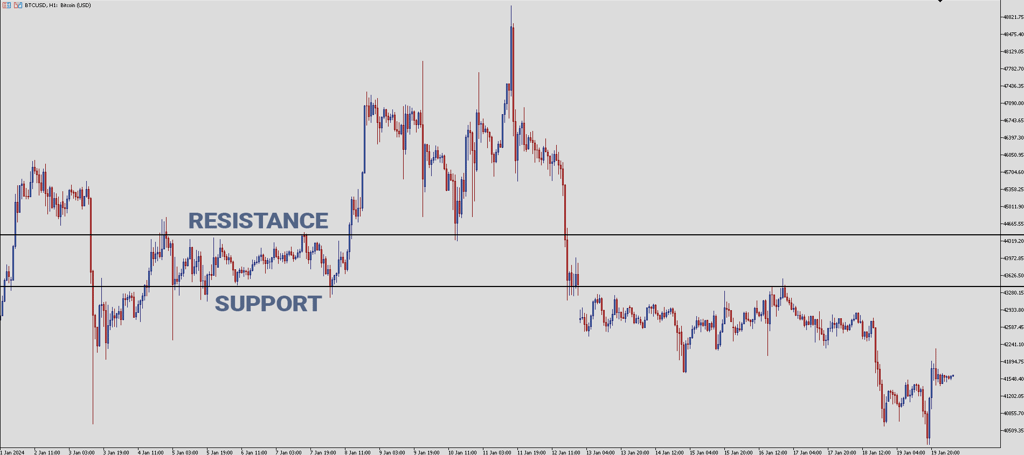

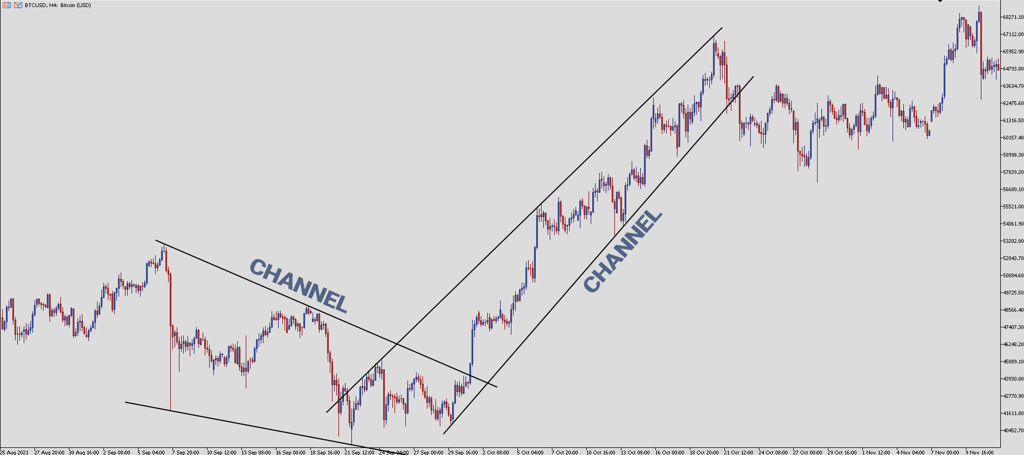

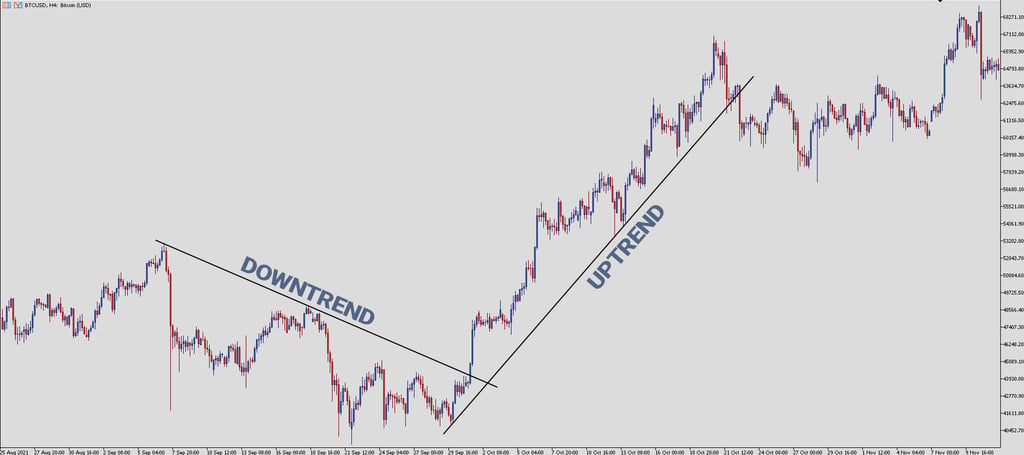

For example, an engulfing pattern is a very common candlestick formation used to spot trend reversals and continuations after a pullback. A bullish engulfing pattern is a reversal pattern that occurs when a bullish candle engulfs a bearish candle.
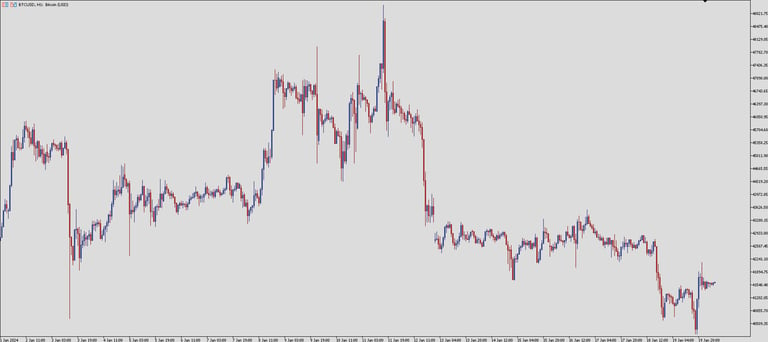

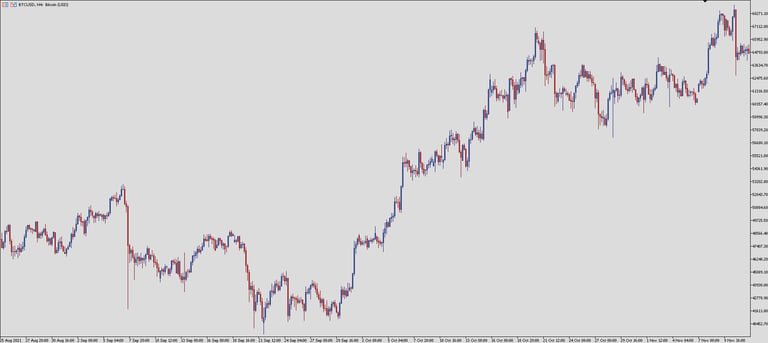

1-Hour Candlestick Pattern
4-Hour Candlestick Pattern
In the exemplary price chart above, a resistance level and a support level are illustrated. The support level is an area where buyers are likely to step in and prevent price from falling further. Resistance levels are areas where sellers are likely to step in and prevent the price from rising further.
A breakout occurs when price breaks past this resistance level which now can act as a level of support. Here, a retest occurs where the price retests the support level and then fails to hold this level. As such, this breakout may be referred to as a false breakout.
Support and resistance levels are formed by the interaction of supply and demand. When there is more demand than supply, the price will rise and test the resistance level. If the price is unable to break through the resistance level, it will likely fall back down to the support level.
Conversely, when there is more supply than demand, the price will fall and test the support level, as did on the chart above. If the price is unable to break through the support level, it will likely rise back up to the resistance level.
Support and resistance levels are used to identify potential trading opportunities in a number of ways. These levels are used as one metric to confirm potential entry and exit points and to identify potential trend reversals.
Trendlines and Channels for Identifying Market Trends
Trendlines are drawn on a chart to connect a series of highs or lows. They identify the direction of a trend and potential entry and exit points. A bullish trend is an uptrend, and a bearish trend is a downtrend.
Channels are a type of trendline that is formed by connecting a series of highs (an up channel) and a series of lows (a down channel). Channels identify the direction of a trend and potential trading ranges.
Trendlines and channels are both used in price action trading to identify potential trading opportunities, entry and exit points and potential trend reversals.
Moving Averages and Their Role in Price Action Analysis
A moving average (MA) is a technical analysis indicator that is used to smooth out price data by creating a line that is equal to the average price over a specified number of periods.
Moving averages are used to identify trends, support and resistance levels, and potential entry and exit points.
There are many different types of moving averages, but the most common are the simple moving average (SMA or moving average) and the exponential moving average (EMA).
Resistance - Support Levels and 1-hour Price Chart
Trends and One-Hour Price Action Chart
Channels and One-Hour Price Action Chart


The price action chart above illustrates a downtrend followed by an uptrend. Here, the downtrend ends with a first long-legged doji at the base of a downtrend. This long-legged doji is a candle that comprises long upper and lower shadows and has roughly a similar opening and closing price.
When a doji appears following a significant advance or decline, the pattern demonstrates indecision and can be most significant. Some traders may take action based on the one-candle pattern, while others want to see how the price reacts to the long-legged doji.
Here, the price reacts to the long-legged doji with the formation of three straight bullish candles. However, traders who wish to enter a long trade here should heed caution. For example, this three-candle stick pattern is formed by a number of adjacent bullish candles having smaller wicks and whose opening price and closing prices demonstrate an upward trend over the previous candle.
However, in this particular situation, the second bullish candlestick in the pattern has a smaller body than its previous candlestick and the third bullish candlestick has a smaller body than its previous bullish candlestick.
This pattern can be interpreted as a stalled pattern where the bulls provide a weak sentiment and where price momentum is beginning to fade. That means a price reversal is possible.
And also, note the formation of a second long-legged doji after the third bullish candlestick at the conclusion of this three candlestick short uptrend. This second doji is yet another indication of indecision or a potential reversal. As such, traders should heed caution if considering entering a trade at this point.
Price Action and Breakouts
Breakout trading involves entering a position when an asset appears to be breaking out of a range. For example, as illustrated in the examples above, price is noted to break out at several certain key levels.
The formation of significant patterns represents distinct locations for entries as described previously. These formations provide reliable breakout indicators and confirmations when formed at present and correct levels that align with trendlines and trend sentiments. For example, a three white soldiers patterns after a downtrend at a previous level of strong resistance where support was established earlier potentially indicates a strong reversal.
Depending on market structure and historical printing, the signifcant indicators are more or less reliable according to the sentiment and confirmations. Look for imbalances and gaps for higher reference. Immediately after a downtrend, a reversal is depend on historical data where support must have found and reacted strongly. In addition, reliable breakout indicators are configured and present by news. The formation of a positive uptrend on a smaller timeframe is likely to be true in accordance to a higher timeframe.
Risk Management in Price Action Trading
Risk management is an essential part of trading to protect capital and avoid losses. There are a number of techniques, including:
A stop loss is an order that automatically closes your trade at a predetermined loss level. This will help to limit losses. A profit target is an order that automatically closes your trade at a predetermined profit level. This will help to lock in gains and avoid giving them back. Position sizing to choose the amount of capital risked on each trade. It is important to only risk a small percentage on each trade.
Setting Stop-loss and Take-Profit Levels Based on Price Action
Setting stop loss and take profit levels based on price action involves analyzing price action to determine appropriate levels for risk management and profit taking.
Start by identifying significant support and resistance levels. These levels represent areas where the price has historically had difficulty moving beyond or has shown a tendency to reverse. They act as psychological barriers in the market and are important reference points for setting stop loss and take profit levels.
Next, determine the risk reward ratio for the trade. This ratio represents the potential profit relative to the potential loss. A common rule of thumb is to aim for a risk-reward ratio of at least 1:2, meaning a potential profit is twice the size of the potential loss.
Based on price action analysis, set a stop-loss level just below a support level if going long (buying) or just above a resistance level if going short (selling). This helps protecting capital in case price breaks through the support or resistance level, indicating a potential trend reversal.
The take profit level is the price at which we plan to exit the trade to secure profits. Set your take profit level based on key resistance or support levels, trendlines, or other chart patterns that suggest a potential reversal or significant price movement. Alternatively, use a trailing stop strategy, where the take profit level adjusts dynamically.
Position Sizing and Risk-Reward Ratio Considerations
Use correct position sizing to limit the amount of risk on each trade. This involves assessing the risk associated with a trade and determining the appropriate position size based on risk tolerance and account size.
The size of a trading account is a critical factor in position sizing. Generally, it’s advisable to risk a small percentage of the account capital per trade to avoid significant drawdowns.
The placement of the stop loss, determined through price action analysis, plays a crucial role in position sizing. A tight stop loss allows a larger position size since the potential loss per trade is smaller. Conversely, a wider stop loss necessitates a smaller position size to maintain risk within acceptable limits.
The risk-reward ratio measures the potential reward of a trade relative to the potential risk of the trade. It provides a quantitative assessment of the trade’s attractiveness and helps assess whether the potential reward justifies the risk taken.
Based on price action analysis, determine the potential take-profit level. This level is typically set by identifying key support or resistance areas and trendlines, that suggest a potential reversal or significant price movement.
To calculate the risk-reward ratio, divide the potential profit (distance between entry and target) by the potential loss (distance between entry and stop-loss).
It’s essential to assess the overall win rate of the trading strategy. A higher win rate allows for smaller risk-reward ratios, as more winning trades can compensate for a smaller reward.
Conclusion
Price action trading is powerful and a versatile trading strategy. It is a way to identify trends and reversals, and is used to trade both long and short positions. If you are new to trading, we encourage you to practice price action techniques.
Channels and Candlestick Patterns One-Hour Price Action Chart
The SMA is calculated by adding up the closing prices of a security over a specified number of periods and dividing by the number of periods. The EMA is calculated by giving more weight to recent price data than to older price data.
Moving averages identify trends by looking for the direction of the slope of the moving average line. A moving average that is rising denotes an uptrend, while a moving average that is falling denotes a downtrend.
Price Action Strategies
Confluence and Price Action
One of the most effective ways to find confluence while price action trading is by combining two or more technical indicators. In this manner, multiple indicators provide consistent market signals.
Moving Averages and One-Hour Price Action Chart
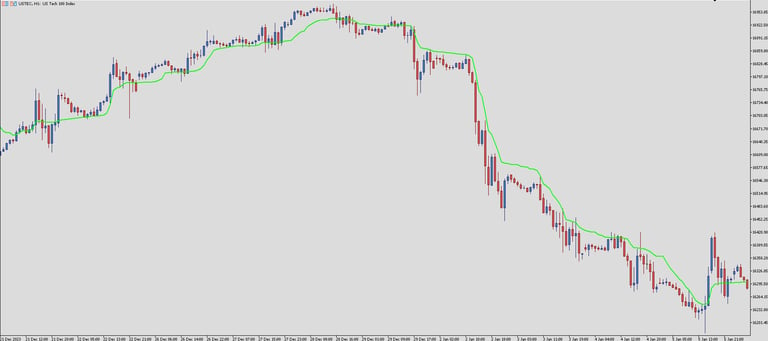

Moving Averages and One-Hour Price Action Chart
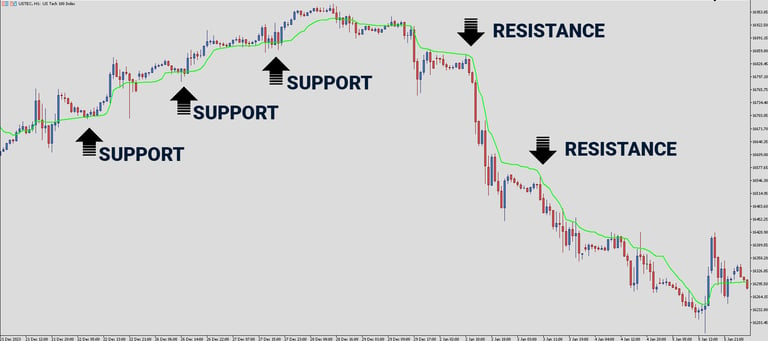

This pattern is interpreted as a sign that the opposite party is starting to take control of the market and that price is probably reversing.
A bearish engulfing pattern is a reversal pattern that occurs when a bearish candle engulfs a bullish candle. This pattern is interpreted as a sign that the bears are starting to take control and that price is likely to fall. A bullish engulfing pattern is the opposite.
Candlestick patterns are used in conjunction with other technical analysis tools, such as support and resistance or moving averages and volume, to provide a more comprehensive view of the market. By combining multiple technical indicators, chances of making profitable trades can increase.
Some of the more important candlestick patterns for price action trading:
A hammer pattern is a bullish reversal pattern that occurs when a small body candle with a long lower shadow appears at the bottom of a downtrend.
This pattern is interpreted as a sign that the bears are losing momentum and that the price is likely to rise. The hammer is a candlestick pattern that occurs not only after a downtrend, but at any market situation which refers to a breakout and strong buying sentiment.
The three white soldiers pattern indicates that the bulls are gaining control of the market and that the downtrend is likely to end. This pattern is often seen at the bottom of a downtrend but can also occur after a period of consolidation. It consists of three consecutive green candles, each closing higher than the previous candle. The candles should have small upper and lower wicks, and the opening price of each candle should be within the body of the previous candle.
These are just a few of the more important candlestick patterns for price action trading. Many other patterns can be used, and the approach will vary depending on the individual preferences.
Support and Resistance Levels and Their Significance
Support and resistance levels are important technical analysis concepts that are used to identify potential trading opportunities.

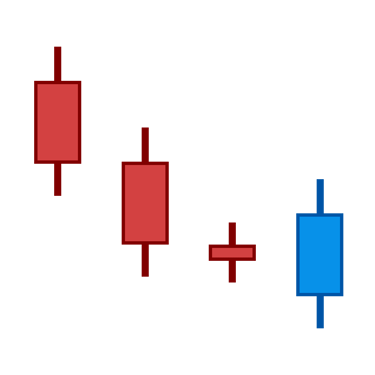
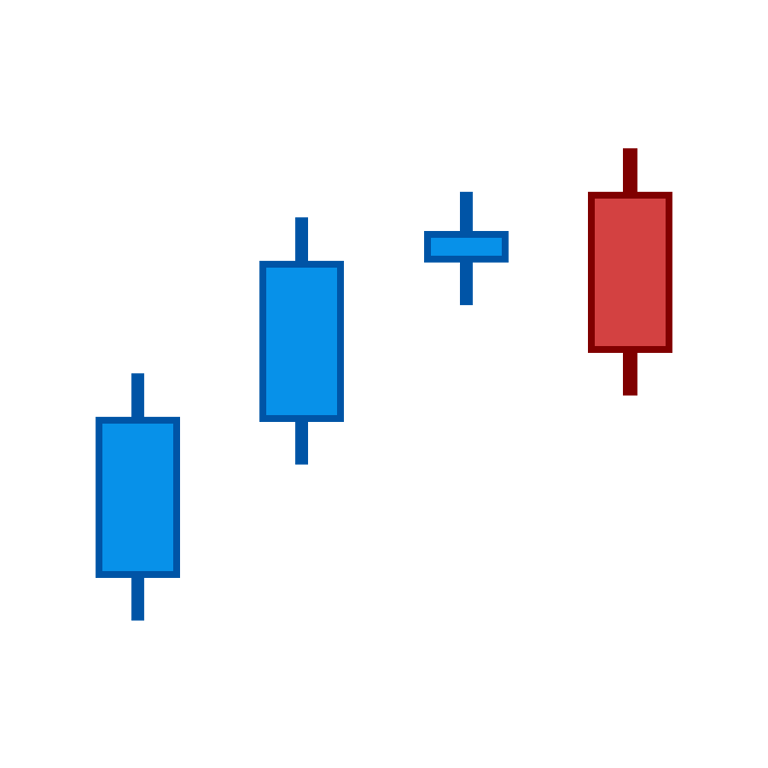

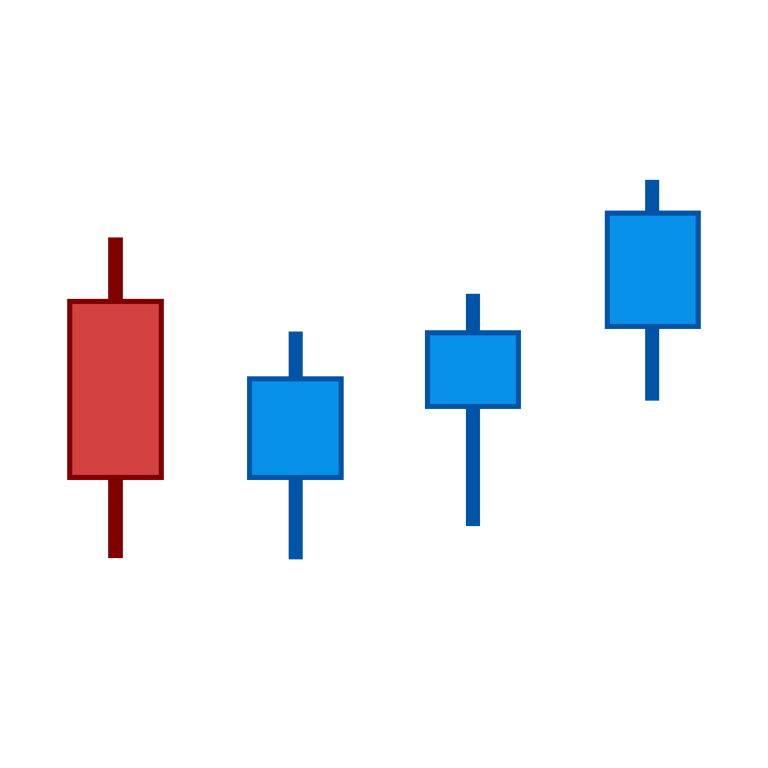

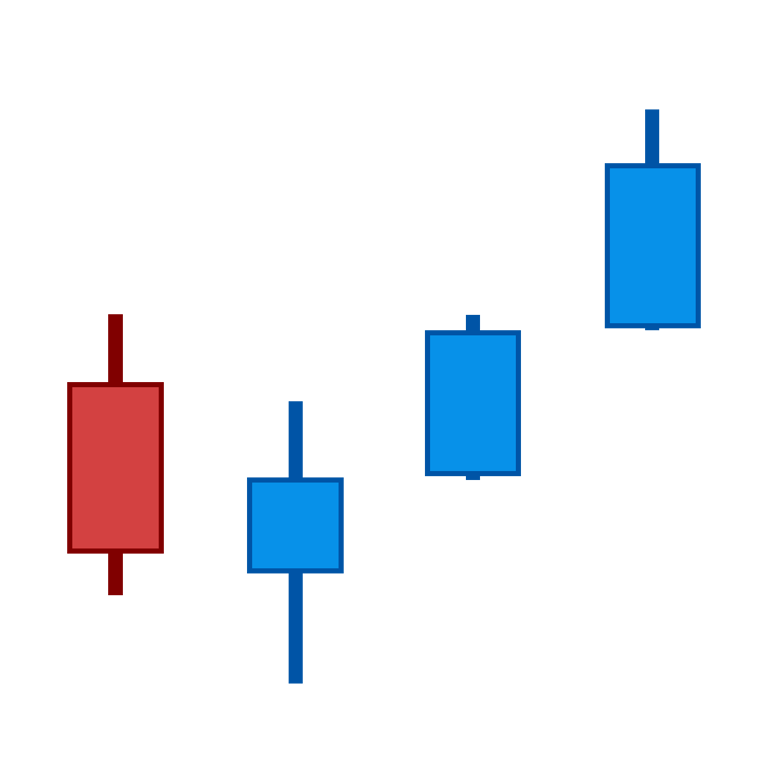

Bullish and Bearish Engulfing Patterns
Hammer Pattern
Three White Soldiers
© 2025. All rights reserved.
You understand and acknowledge that there is a very high degree of risk involved in trading securities and, in particular, in trading forex, futures and options. Please ensure that you fully understand the risks involved. The site is providing educational content which will provide you with an indepth knowledge of the market. This site is in no way providing any investment, financial, tax, or legal advisory and do not purport to provide personalized investment, financial, tax, or legal advice in any form. None of the provided information does recommend the purchase of particular securities, nor does the provider promise or guarantee any particular results. The provider assumes no responsibility or liability for your trading and investment results, and you agree to hold the provider harmless for any such results or losses. It is up to you as a trader to make your own judgement using your own analysis.
